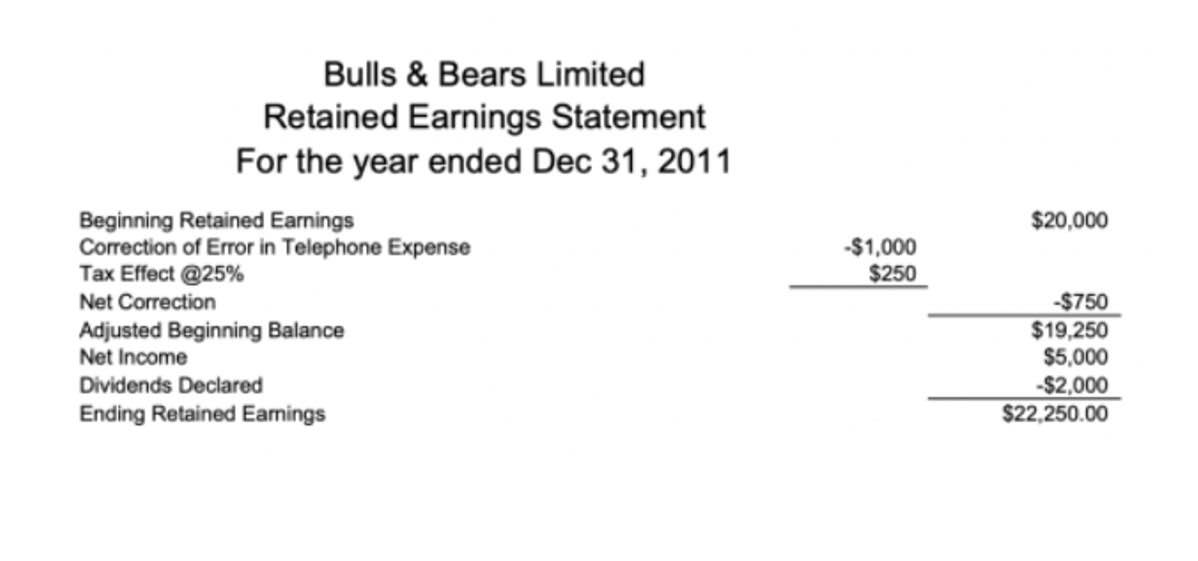
Though cash dividends are the most common payout, remember that stock dividends are another option. retained earnings normal balance Unlike cash payments, stock dividends don’t immediately impact a company’s bottom line. To find retained earnings, you’ll need to use a formula to calculate the balance in the retained earnings account at the end of an accounting period. By recording profits in retained earnings, the company increases its assets and enhances its value without incurring debt. Whether positive or negative, retained earnings appear at the top of the liabilities side of the balance sheet, as part of the company’sshareholders’ equity.
- For the past 52 years, Harold Averkamp (CPA, MBA) has worked as an accounting supervisor, manager, consultant, university instructor, and innovator in teaching accounting online.
- When a company earns net income, it will credit the retained earnings account, thereby increasing its balance.
- Capital expenditures, like purchasing machinery, are capitalized and depreciated over time, reflecting the asset’s useful life.
- The higher the retained earnings of a company, the stronger sign of its financial health.
- To find retained earnings, you’ll need to use a formula to calculate the balance in the retained earnings account at the end of an accounting period.
- We offer an extensive library of learning materials, including interactive flashcards, comprehensive textbook solutions, and detailed explanations.
Steps on How to Calculate Retained Earnings
Businesses that generate retained earnings over time are more valuable and have greater financial flexibility. It’s safe to say that understanding the retained earnings equation and how to calculate it is essential for any business. This article provides a comprehensive overview of what you need to know about retained earnings, but feel bookkeeping and payroll services free to jump straight to your topic of focus below. The 500 year-old accounting system where every transaction is recorded into at least two accounts.
Do Retained Earnings Carry Over to the Next Year?

By the end, you’ll be well-versed in real-world applications of retained earnings and develop the skills to observe changes over time. Get ready to dive into the intricacies of retained earnings in business studies. Accountants use the formula to create financial statements, and each transaction must keep the formula in balance. This bookkeeping concept helps accountants post accurate journal entries, so keep it in mind as you learn how to calculate retained earnings. The income statement (or profit and loss) is the first financial statement that most business owners review when they need to calculate retained earnings. This document calculates net income, which you’ll need to calculate your retained earnings balance later.
How to Calculate Retained Earnings

They also memorized that liability and owner’s (or stockholders’) equity accounts normally have credit balances that increase with a credit entry and decrease with a debit entry. It was easy to accept that every transaction will affect a minimum of two accounts and that every transaction’s debit amounts must be equal to the credit amounts. Then we translate these increase or decrease effects into debits and credits. Let’s look at the stockholders’ equity section of a balance sheet for a corporation that has issued only common stock.

Typically, this cash is repaid through investment in work capital, fixed investment investments, or for repayment. ☝️ It is compulsory to allocate 5% of profits each year to the legal reserve, until it reaches 10% of share capital. The Retained Earnings account is credited to reflect the addition of the net income for the year. Increasing and decreasing of retained earnings are caused by many different factors. Those key factors including Net income/ Net Loss, Dividend, Adjustments, and Interest Expenses. For example, RealEst is the real estate company that runs the business is the town for three years and now the accumulated earnings reach 100,000 USD.
Retained Earnings Journal Entry
- Now, let’s say ABC Corporation declares and pays dividends of $10,000 to its shareholders during the year.
- When one company buys another, the purchaser buys the equity section of the balance sheet.
- A higher ratio may indicate increased financial risk, potentially affecting borrowing costs.
- For example, Company A has been in business for five years, and its annual report indicates consistent growth and high retained earnings.
- Nonetheless, we are including an introduction to the topic here because the calculation for earnings per share involves the stock of a corporation.
- To make informed decisions, you need to understand how financial statements like the balance sheet and the income statement impact retained earnings.
As a result these items are not reported among the assets appearing on the balance sheet. After a cash flow 2-for-1 stock split, an individual investor who had owned 1,000 shares might be elated at the prospect of suddenly being the owner of 2,000 shares. However, every stockholder’s number of shares has doubled—causing the value of each share to be worth approximately half of what it was before the split. If a corporation had 100,000 shares outstanding, a stockholder who owned 1,000 shares owned 1% of the corporation (1,000 ÷ 100,000). After a 2-for-1 stock split, the same stockholder still owns just 1% of the corporation (2,000 ÷ 200,000). Before the split, 1,000 shares at $80 each totaled $80,000; after the split, 2,000 shares at $40 each still totals $80,000.

Journal Entries for Retained Earnings

Revenue refers to sales and any transaction that results in cash inflows. Alternately, dividends are cash or stock payments that a company makes to its shareholders out of profits or reserves, typically on a quarterly or annual basis. Dividend payments can vary widely, depending on the company and the firm’s industry. Established businesses that generate consistent earnings make larger dividend payouts, on average, because they have larger retained earnings balances in place.
